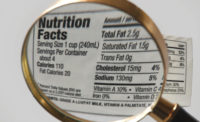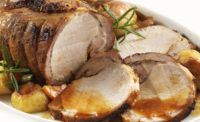While Americans wait all year in anticipation for their favorite seasonal-inspired food and drinks, new research from Mintel, Chicago, reveals that nearly seven in 10 (67%) consumers enjoy being able to consume specific seasonal ingredients year-round. Still, while Americans want the option of seasonal food and drink throughout the year, over three-quarters (78%) consider seasonal dishes to be a treat and more than two in five (42%) say they are willing to pay more for a seasonal dish when dining out.
Seasonal food and drink ingredients present a welcome opportunity for consumers to extend that special holiday feeling or escape the dreary winter days for sunny summer flavors. Indeed, three in four consumers agree that dining out is a great way to enjoy seasonal flavors, with 70% saying that they enjoy the seasonal menu offerings at restaurants. Looking beyond specific dishes, 60% of consumers agree that it’s enjoyable when the atmosphere of a restaurant conveys a specific season.
When thinking about seasonal foods, Americans are most likely to consider the flavors and ingredients to be fresh (45%). However, seasonal flavors also create an emotional connection with consumers, such as evoking notions of comfort (39%), special (39%), warmth (33%) and happy (30%). What’s more, over one quarter (27%) of Americans consider seasonal flavors to be nostalgic.
“As Americans associate seasonal flavors with being fresh, special and nostalgic, it seems consumers are less likely to connect seasonal with mass-produced items, but rather items that conjure up an image of being homemade and remind them of personal memories,” says Diana Kelter, foodservice analyst. “There is an opportunity for restaurants to leverage seasonal claims in more unique ways and build off of the seasonal experience through the presentation and description of their dishes.”
The iGeneration seem to be trending toward a more shareable dining experience, as iGeneration consumers are the most likely to show a preference toward seasonal appetizers and small plates (50%) as compared to just over one third (36%) of Baby Boomers, who prefer to see seasonal ingredients in salads (50%) as compared to just 41% of iGens.



